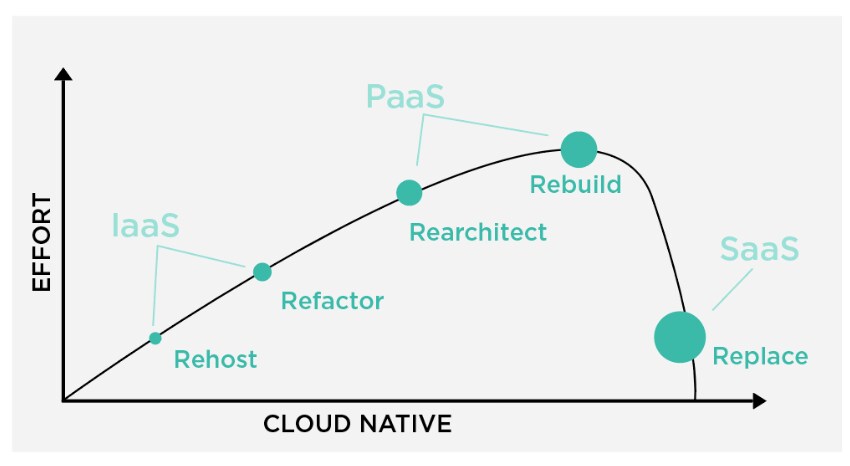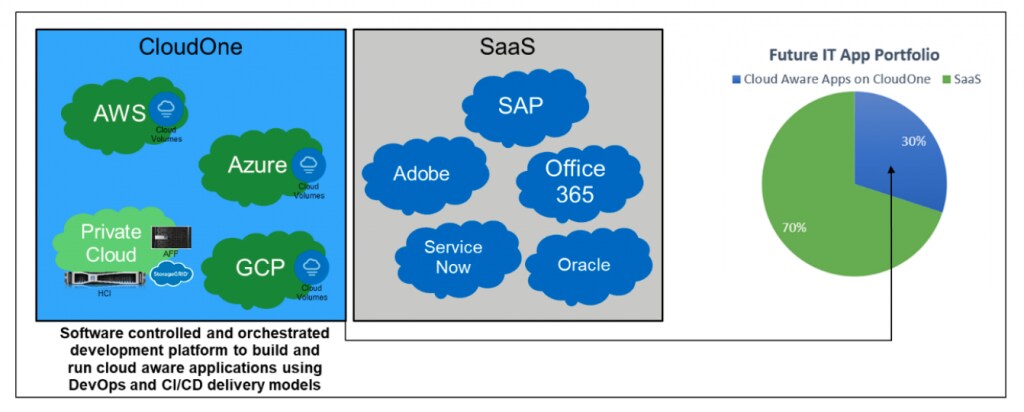Achieving Target State Architecture with a Hybrid Multicloud Inside NetApp


Kamal Vyas
Embarking on an enterprise cloud journey without an application strategy is a recipe for disaster and will result in higher costs and disappointments for the organization. The first step in our cloud journey was to determine the right cloud solution―we call it target state architecture (TSA)—for all business applications in the enterprise portfolio. Inside NetApp, we have rationalized all our business applications, and based on business strategy and criticality, have determined the right cloud solution (IaaS, PaaS or SaaS) for each one. This included deciding if we should host applications on-prem or in a public cloud. Our approach was to:
- Rationalize our business applications and their fit in our hybrid multicloud environment
- Determine the right cloud solution for the applications using the five “R’s”
- Align applications to the right cloud solution, i.e. TSA
01 | Application Rationalization
Using the TIME (Tolerate, Invest, Migrate, Eliminate) model published by Gartner Research, the team completed a thorough rationalization of about 350 applications in NetApp’s business portfolio. Tolerate and eliminate apps will be slowly phased out. Invest apps had already been aligned to the right target state, but further functionality needs to be developed. Migrate apps are still critical to business and will have to be altered to reach target state architecture.
Once formalized and socialized, this rationalization helped IT and the business to align on which applications were critical and strategic, and which ones should be sunsetting. We have focused our cloud efforts on the invest and migrate categories.
02 | The Five “Rs”
Once we determined which apps are critical, next we determined the level of “cloudiness” required. This is where our next level of classification, called the 5Rs (introduced by Gartner), comes into play. Each of these Rs―rehost, refactor, rearchitect, rebuild, replace―has a different level of effort associated with it, and is aligned to the strategic value that the application provides. As the saying goes in IT, for every effort there must be a value associated with it.

For example, if an application supports a common business process not unique to NetApp’s business, e.g. email, our strategy is to assign that to a Replace cloud model and use SaaS-based options like Office365. The business value here is simplification.
If an application provides strategic or innovative advantage to NetApp, we aligned it to the Rebuild cloud model, i.e. PaaS with full DevOps. These applications are built ground up with full control of the entire stack via best in class processes and technologies. They help us deliver features and cost efficiencies at the speed our business demands.
Other applications like packaged applications bought from a vendor, such as Data Lake or Hadoop solutions, fit into one of the other three Rs. Rehost (IaaS) is the bare minimum model with infrastructure delivered as code and by applying other efficiency levels as applicable:
- Refactor, i.e. IaaS + code structuring/modularization, API gateways, etc.
- Rearchitect, i.e. IaaS + containerization, cloud, etc., but not full CI/CD due to longer release cadence
Our strategy in a nutshell is to:
- Keep the business running by leveraging SaaS (Replace) for common business processes, i.e. Commodity Services and System of Record type applications
- Transform the business by leveraging PaaS and DevOps for strategic and innovative applications
- Avoid accumulating further technology debt by leveraging PaaS and DevOps for all new (non-SaaS) applications
- Leveraging IaaS as the bare minimum for all packaged apps and gain Refactor and Rearchitect efficiency if possible
03 | Buy, Build, Rent
Once we completed the app categorization exercise, we were surprised to see that the best suited target state architecture for many of our applications was SaaS. This makes sense, as a lot of the applications are used to keep the business running. There are SaaS providers that can deliver common capabilities at a price and performance point which makes sense.

Our strategy is to identify the best-in-class SaaS solutions and rely on them for our requirements. Over the next 3-5 years, we will migrate 70% of our applications to SaaS, e.g. replace where needed per the 5Rs above. For the remaining 30%―which align to the other four Rs—will move to our CloudOne platform where we will be providing IaaS, PaaS, CaaS, and DevOps services, which our developers can leverage to build modern cloud native applications.
04 | Pillars of CloudOne Platform
CloudOne, our next generation data center, is no longer the physical four-walled enterprise data center. It is anywhere—private or public cloud―where we can get software-controlled resources at the value point we desire, and which can be orchestrated and managed via tools and automation.
Below is a glimpse of what we have used to build and maintain our CloudOne platform. The entire stack comes together to deliver application developers and application operations a complete end-to-end automated experience, where distractions are removed like building infrastructure, chasing testing/security teams, or cleaning up old environments. We strive to remove all distractions so that our developers can focus on delivering code and value at speeds the business demands.
Achieving Target State Architecture in NetApp IT from NetApp
The NetApp-on-NetApp blogs feature advice from subject matter experts from NetApp IT who share their real experiences using NetApp’s industry-leading data management solutions to support business goals. Visit www.NetAppIT.com to learn more.
Kamal Vyas
Kamal Vyas is the Chief Infrastructure Architect for NetApp IT and is responsible for NetApp IT’s hybrid cloud architecture, translating the NetApp IT vision into an infrastructure design that spans the public and private clouds. Kamal is a cloud evangelist, advocating for organizational adoption of and business transformation through the cloud and Data Fabric. Kamal has expertise in strategy, architecture and design of next-gen infrastructure solutions and transition to an IT as a Service model.
